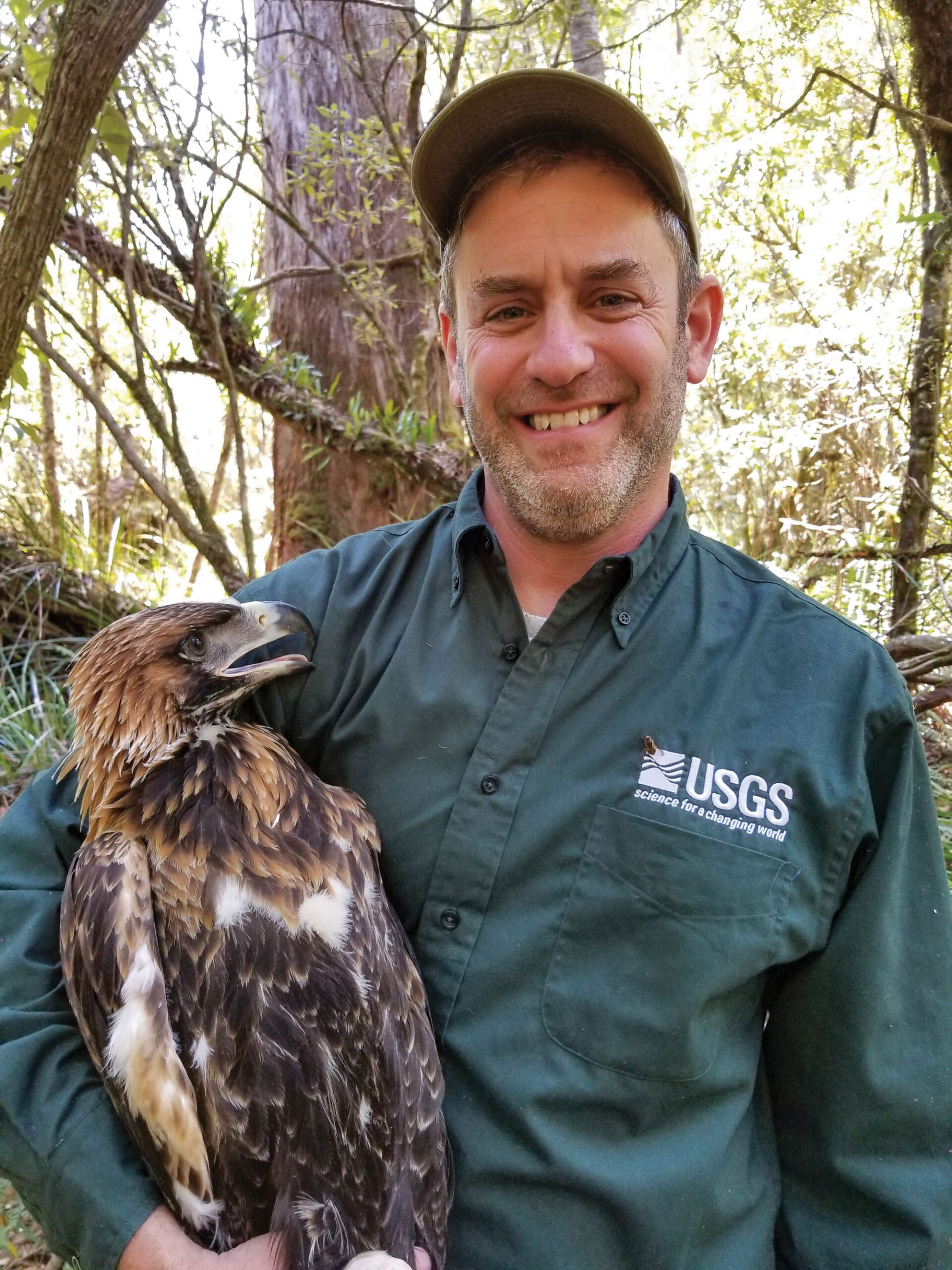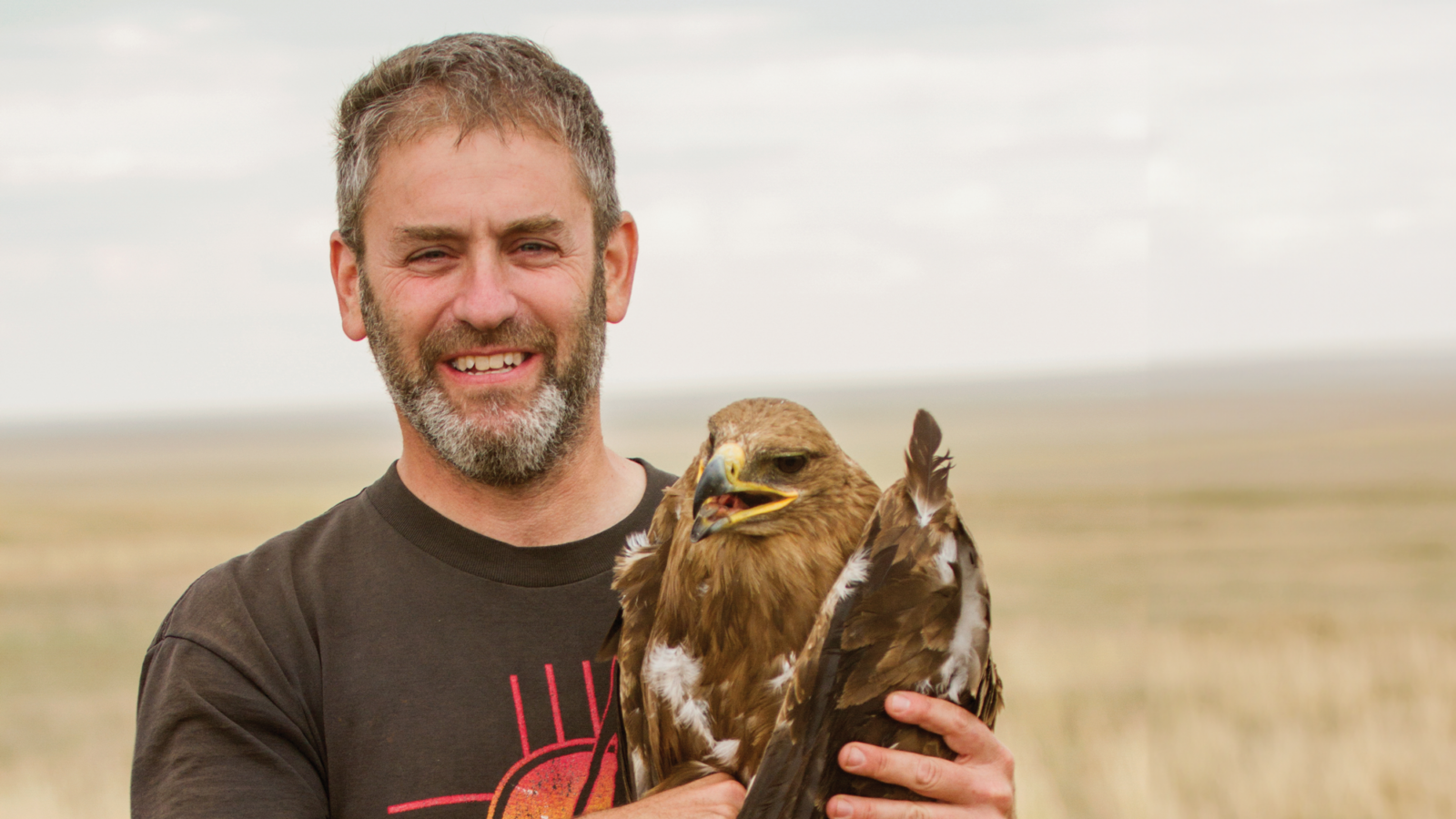We recently caught up with conservation biologist Todd Katzner ’87 as he packed for a research trip to Kazakhstan, where he studies the ecology of eagles. In a globe-trotting career, Katzner has found himself surveying for songbirds in the Alaskan bush, snowshoeing across Wyoming on the track of a rare type of rabbit, or even checking in from Kazakhstan to Jane Lucia’s Williston Outdoor Ecology class. As a Supervisory Research Wildlife Biologist with the United States Geological Survey, Katzner does work that informs everything from renewable energy policy to the development of an avian flu vaccine for the California condor, a potential game-changer for this severely endangered species. “My goal is to produce science that matters to people,” says Katzner. “Where there are problems, I work to find solutions. Science can point the way.”
You recently co-authored a paper on lead poisoning in raptor populations across the United States that created a huge stir, the rare scientific study that goes viral. Can you describe your team’s findings?
The paper showed that about 50 percent of the eagles out there have evidence of chronic lead poisoning. They’re not getting exposed to lead once. They’re getting it again and again, and they’re getting it from spent lead ammunition. Animals shot with lead are going to be scavenged. Something, often an eagle, is going to eat the gut pile of a deer or the carcass of a woodchuck. We were able to take this understanding of lead poisoning and tie it to population-level effects. We showed that there are demographic consequences when so many of these birds are poisoned. For hunters who want to conserve wildlife, there is also a really easy solution: switch to non-lead ammunition There were something like 500 newspaper articles about us, it was remarkable—The New York Times, The Washington Post, The Guardian. We even made the Daily Hampshire Gazette, and my father saved the article.
Your raptor research generates headlines, but you have other areas of interest.
Just this morning I submitted a proposal for pygmy rabbit work. I’ve been studying them since graduate school. Pygmy rabbits are the smallest rabbit in North America and one of the smallest in the world. They occupy sagebrush habitats in the Great Basin, which is basically western Wyoming to eastern Oregon and south through Nevada and parts of Utah, and they eat a diet that is full of toxins. There are all these plant chemicals in sagebrush that are defenses against being eaten. It’s metabolically expensive to process those toxins, yet pygmy rabbits somehow do really well. They also manage to live in some of the coldest places in the lower 48. The other side of it is that we are destroying sagebrush habitat everywhere it occurs. Fires are doing that, cattle grazing is doing that, lots of human activities are doing it. The pygmy rabbit is a species that has been petitioned for listing on the Endangered Species List. Because the species is uncommon and declining, there is an interest to understand it and the habitat it occupies.

Your work with the Renewables–Wildlife Solutions Initiative of the U.S.G.S. also looks at the effects of human activity on wildlife populations.
Logic tells us that renewable energy can benefit wildlife. Our intuition is that for 99 percent of species, more will die from climate change than from wind turbines or solar energy. But there are always going to be winners and losers. We happen to have really good tools to estimate how many birds or bats will die if we put up a wind or solar facility. The goal of the Renewables–Wildlife Solutions Initiative is to translate individual counts into an understanding of population-level effects. How many is too many? One of the highest-profile species that die in fairly large numbers at wind turbines are golden eagles. Golden eagle populations are stable right now, but if the number killed increases dramatically, then their populations will decline. Bald eagle populations, on the other hand, are in an almost exponential growth, and if bald eagles are killed, it is unlikely to cause the population to decline. When I was at Williston, you never saw a bald eagle. Now you can see them all the time along the Connecticut River. So the number of how many is too many for golden eagles is way smaller than for bald eagles. If you look at California condors, it’s even smaller. There are 500 of them. On a population level, every condor matters.
You’re involved with the development of novel systems for tracking migratory birds. How can satellite telemetry influence renewable energy policy?
A lot of the work we’ve done is based on understanding how birds move—Where do they fly? What altitude above the ground?—so that we can predict where they might be more likely to encounter a wind turbine. Then we can really narrow down the conflict zone. When we can identify risky areas, there are options. Hey, can this turbine be moved a little bit? Or is there something to do to encourage the birds to fly somewhere else?
During your ongoing eagle studies in Kazakhstan, you once discovered a new species of wasp. How did that come about?
Some of my research at Naurzum National Nature Preserve was focused on diet and dietary overlap of different eagle species. Taking apart regurgitated eagle pellets, I sometimes found moth larvae. An eagle pellet is the stuff the bird can’t digest, so there is a ball of fur and bones that they cough up after eating. Everywhere in the world, if you have a fur coat, you have to protect it from moths. These moth larvae were eating the fur in eagle pellets. One day I was pulling apart pellets and found things that looked just like the larvae of a parasitic wasp that I studied as an undergraduate at Oberlin College. I collected these wasps, and it was determined to be a new species. My colleagues and I named it after the park where we found it, Copidosoma naurzumense. It’s a nice example of how things you do at one point in your life can end up influencing you in ways you don’t expect.

